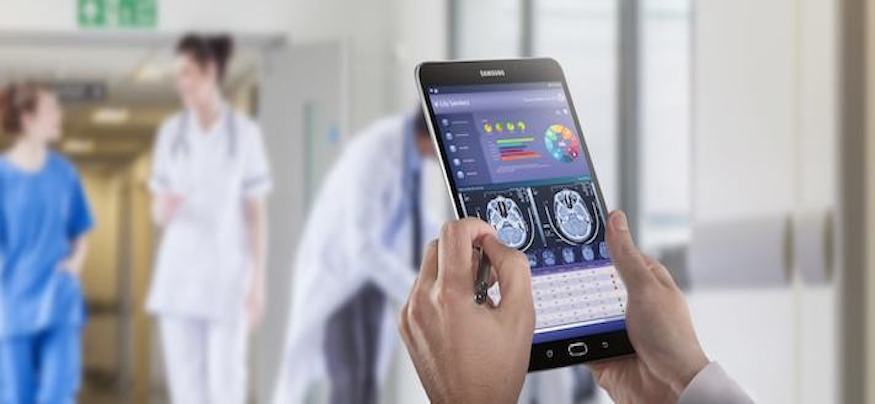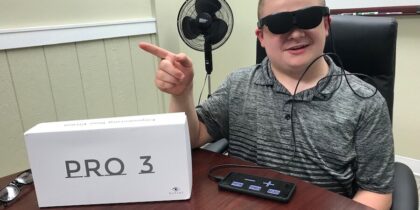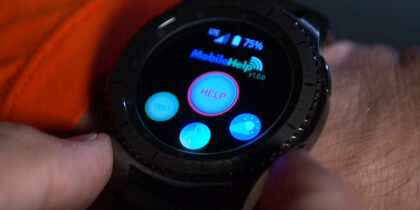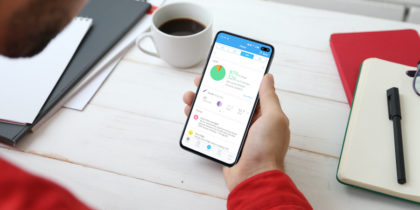When it comes to addressing chronic conditions, medical device manufacturers want to ensure two things: their offerings are easy to use and provide benefits to both patients and doctors. Medtronic, one of the largest medical device makers in the world, is doing just that through its partnership with Samsung. Using neurostimulation to provide more long-term relief for back pain, the company wants to change the perception of therapy with their solutions.
In the past, Medtronic worked on external components that communicated with their medical implants, but they quickly realized that it detracted from their core competency of internal technology. By partnering with Samsung, Medtronic was able to focus on improving the medical care, while allowing Samsung to bring all their experience to bear on intuitive mobile devices designed for the end user.
Providing a Window Into Therapy
The Intellis platform has a number of components, including an implantable neurostimulator, a wire and a lead that delivers electrical signals to the spinal cord. The implant pairs with a Samsung tablet that runs the app that communicates with, and helps control, the device.
Once the neurostimulator is implanted, doctors use the app to fine tune the voltage and current. Physicians can make choices about the strength of the stimulation and where on the spinal cord it is delivered. The device sends data to the app that indicates the patient’s activity, position and orientation, and if the patient is standing, lying down or active.
Create a Successful VR Pain Management Program
Download your roadmap to planning and executing your VR pain management program. Download Now
This is important because a person’s pain level may vary depending on posture and movement, so the device can be tweaked to vary the electrical stimulation to match the patient’s actions. The Samsung tablet displays data in a graphical and intuitive way, allowing the physician to calibrate settings based on the specific needs of the individual. Overall, this can help healthcare providers deliver more personalized and accurate care than ever before.
Why is that sort of fine-tuning necessary? Jim Willenbring, senior marketing director of Medtronic explains, “In the body, you can measure heart rate, lung function, blood sugar — many different things can be measured objectively. But with pain, there is no objective measurement.”
Most health professionals currently use a visual, analog scale that uses a range of icons and numbers from 0 to 10, with zero being no pain and ten being severe pain. However, because people perceive pain differently, it can be difficult to figure out what type of treatment is most effective. The app uses the Samsung GUI which helps the physician visualize the patient and then fine-tune the therapy based on the data.
An Ideal Partnership
A built-out GUI, user design experience and a variety of secure devices were some of the reasons why Medtronic chose to partner with Samsung.
“Medtronic wanted to leverage Samsung’s deep expertise with consumers and the user experience they created on their mobile tablets and smartphones,” says Willenbring. One benefit of the Samsung alliance is to make it easier for physicians to interact with and receive data from the implants using consumer-friendly devices. With better information, doctors can deliver more effective treatment plans. Additionally, having easy-to-read graphs and diagrams can allow patients to understand more about their therapy, and even make their own judgments about how much stimulation is necessary.
Some Medtronic devices allow patients to adjust or tweak initial settings entered by the physician during an evaluation or testing period. Currently, the Intellis app is used only by healthcare professionals, but Medtronic hopes to expand its use to patients, as they have with other devices.
“With these devices, we’ve found a great place to start, but this is not where we’re ending,” says Willenbring. “These connected devices and the data they track provide a rich area for future innovation. We’re excited about the possibilities of these platforms and how they’ll deliver data that will help healthcare professionals make smarter, actionable decisions and ultimately improve patient care.”
Learn more about how healthcare technology solutions can enhance efficiencies and improve the patient experience.








